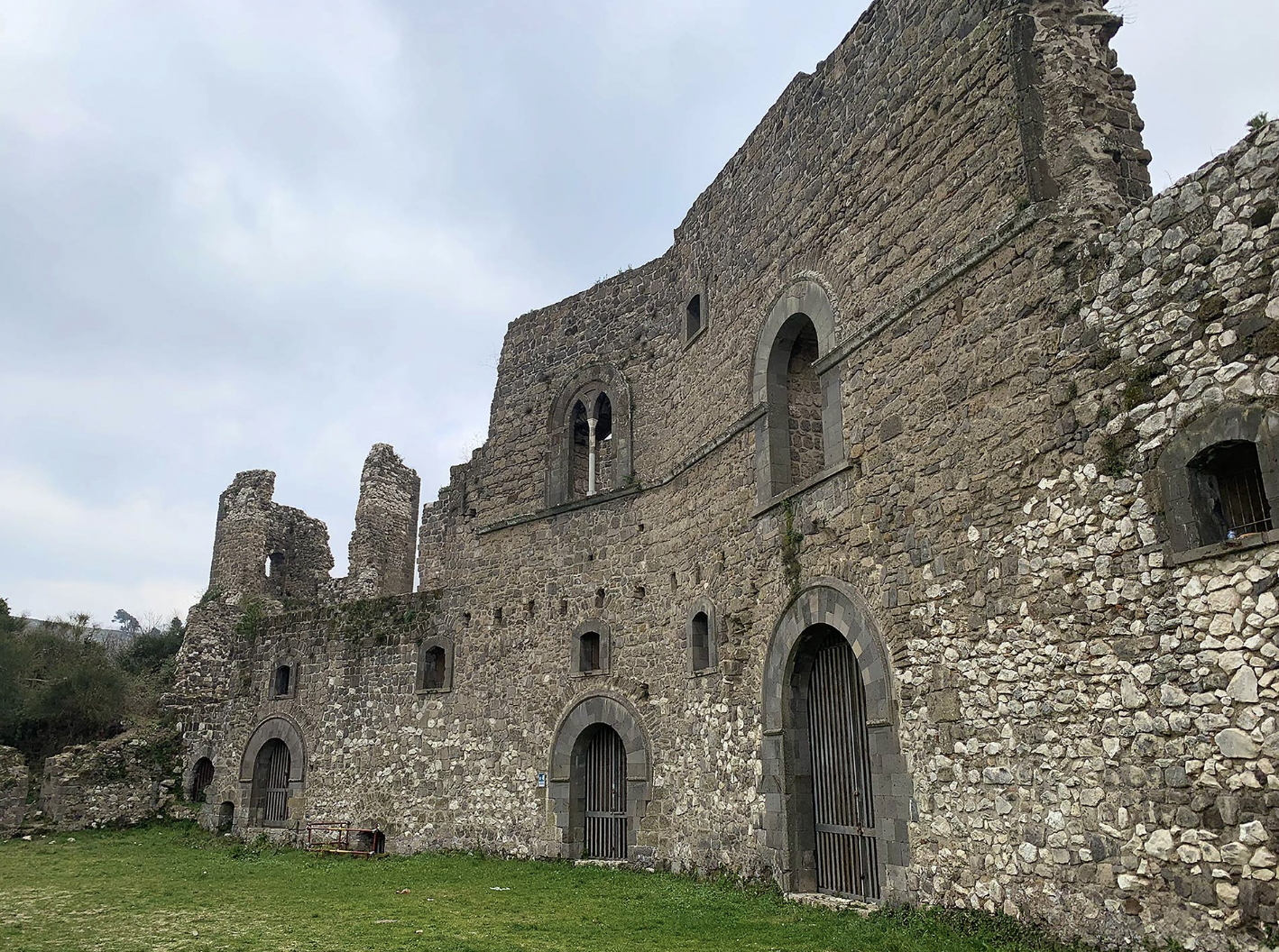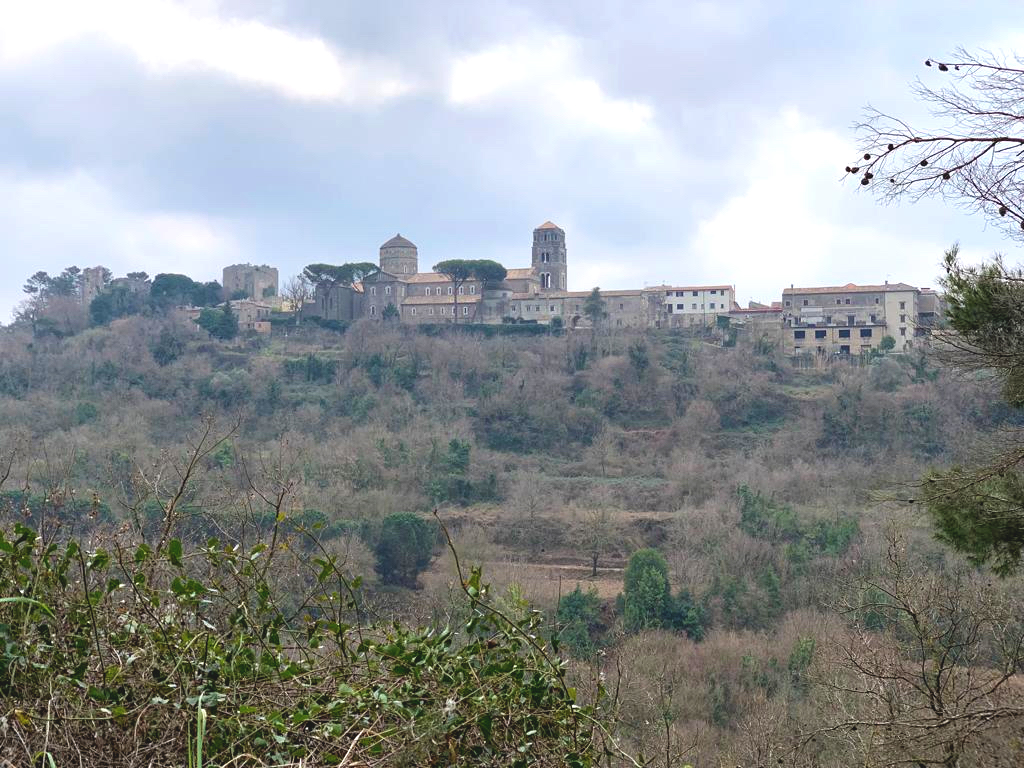The road opens into the woods,among the fir trees rising towards the sky. All uphill, to reach the hill over four hundred meters high, where the view opens up to the sea of the Gulf of Naples.
In the Middle Ages they called it Casa Hirta, precisely to underline the hilly position of that hamlet which had been developing since the 9th century, in the middle of the Lombard period, around the castle, which was said to keep golden eggs in the dungeons. And it was the secured defense of the fortress which convinced the inhabitants escaped from Calatia to move there too, after the ancient city had suffered the outrage of destruction by the Saracens in 880.
The fortress was imposing, with its four watchtowers, its solid walls and the keep, thirty-two meters high, dominating, then as now, the panorama of the village. Where the narrow streets, the medieval portals, the stone of the edifices, the Gothic architectural elements are the distinctive characteristics of that period. The ideal setting for the novellas of the Decameron, chosen by Pasolini for its famous cinematographic work.
In the centre of Casa Hirta, which became Caserta and passed under Norman domination, already bishopric since the abandonment of Calatia, the new cathedral was wanted by the bishop Rainulfo. 
At that time, under the Swabians and controlled by Riccardo Di Lauro, Caserta continued its expansion, which stopped with the advent of the Aragonese, when a persistent decline began, marked by a progressive depopulation already in the Sixteenth century, when Count Giulio Antonio Acquaviva left his residence in the upper town to move to the plain below, where the new Caserta was about to be born. While the one on the hills, about ten kilometers away, became Caserta Vecchia (the Old Caserta). Toponym with which it is identified today that its hamlet is appreciated again both for its position and for the beauty of the ancient settlement, proclaimed a national monument in 1960.



Comments powered by CComment